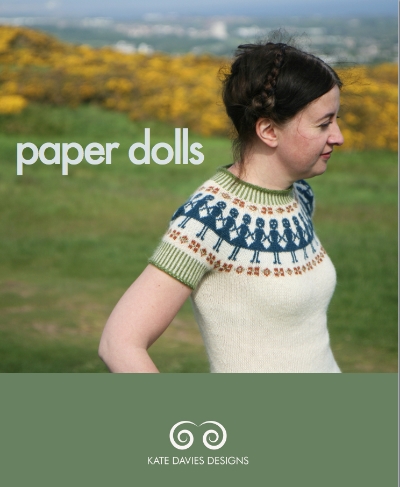DIY wall hangings on a cardboard loom
/Have you seen the anthropologie, boho style wall hangings popping up everywhere lately? This fall I got really into weaving again because of them.
I say again, because when I was in high school, I did some weaving, both on a tabletop cricket style loom (my color choices were... lacking on that one), and also a straightforward tapestry loom. I still have the tapestry hanging in my office, and it's one of my favorite things I've made.
it's held up quite well since 1993, no?
Here's the thing: weaving is not hard--over, under, over, under. Making a loom from cardboard is not hard. They are literally crafts for preschoolers. But you can make some gorgeous stuff on them just with a few key choices on your part.
There are several gorgeous small maker tapestry loom artisans out there making some amazing tools that are totally worthwhile if weaving is going to be a major hobby for you (heeey there Hokett looms! I got three of you for Christmas and am LOVING THEM), but if you just want to try it on for size, and don't want to financially commit much scratch to the project, just scrounge around for some cardboard. I'm sure you've got an amazon box floating around somewhere. The weaving I made it on waaaay back in the early 90s? Done on cardboard.
Now, ovbs, that's not the same loom I made back in 93. I keep stuff, but I'm not a hoarder. This one is a new one I made to do a few wall hangings on. It's a top flap of a box something or other came in, and perfect for a loom because it's relatively sturdy with no creases or bends, and not enormous. This is a lap loom, so think about what will make an appropriate size for you.
I took a ruler and pencil, and marked a straight line across each short end, about an inch in from the edge. Then I measured every 1/2" along that line, and drew a line for my notches. Using scissors, I cut in along those notch lines from the edge to the marked line, and no further. Do this on the top and bottom, and voila. A loom has appeared!
As a reminder: warp threads are the threads that go up and down vertically on your loom. You weave over and under, back and forth, with weft threads. Warp threads are best to be relatively smooth and strong, as they are more under tension than weft. You can use pretty much anything for weft.
a wall hanging done with a jute twine warp
For a tapestry or wall hanging loom, when I don't want the warp threads to show, I just use crochet cotton, the kind that comes in a ball with a cardboard core. It's thin, so the weft threads can pack around it; it's strong, so I don't need to worry about breakage; it's smooth, so I don't need to worry about weft catching on it or it abrading away with all the over-under-ing going on; and it's cheap. You can, of course, get actual rug warp thread, which is advisable if you're going to go hardcore on this, but I have yet to have a problem with crochet cotton.
I've also done several weavings where the warp was designed to show, and in this case, I used sisal twine. Though a bit rough and not super flexible, it looks great and rustic, which is what I was going for. Kind of a pain in the ass to warp the loom the first time, but I got used to it.
to begin to warp your loom, and secure the ends
To warp your loom, first secure the end of the warp thread to the back of the loom--see above. Sometimes I use tape, sometimes I tie a double knot around the notch. Tape's easier, but can work itself loose.
Once the end is secure, run the thread down through the notch to the front of the loom, and down to the corresponding notch on the lower edge of your cardboard. Run the thread through the notch, and back around the next notch in line, making a little loop behind the notch, as you can see above. Make sure you pull your warp snug, you want a bit of tension in the warp but not so much you bend the cardboard. Run the thread up to the next open notch on the top edge, go around the back of the notch, and run the thread through down the front again. Keep doing this for every notch, so the warp threads are all on the front of your loom, as seen here:
When you've filled your last notch, cut the warp thread from the spool, leaving a good 6" or so, and secure the end to the back--again, either with a knot or a piece of tape. Voila, you've warped your loom!
Now, check out that image above again. There's a narrow rectangle of cardboard down at the bottom. That's from a cereal box, and I wove it over and under the warp threads to keep an even space at the bottom. Later, when you're done with your weave, you'll need to finish it by tying off the warp threads and either making fringe or weaving the warp ends in the back of the piece. You can skip this spacer if you're planning on using a dowel or stick at both the top and bottom of your weave.
over, under, over, under . . . note the rounded shape of the weft
Now you're ready to weave! Thread a tapestry needle, or other needle with a large eye, with your chosen weft yarn, and start going over and under your warp threads. Leave a bit of a tail in the back of the piece to weave in later to secure the weft threads.
Oh, and if you've done any weaving before I'm sure you've encountered the dreaded pulling in of the sides. It happens to all of us the first few times and the key to avoiding it is to NOT PULL TIGHT. In fact, bubble the weft thread at an angle as you go over and under, and don't yank on the weft. Gently push the threads down with your fingers, a wide toothed hair comb, or even a fork (this is called beating down the weft). The actual act of going over and under threads takes up some of the length of the yarn, and by bubbling or angling the weft up before you beat it against the previous rows, you're allowing the weft to take up that length, and settle nicely.
I highly recommend using a relatively plain worsted weight or thinner yarn for the first few rows of weft, and weaving a plain weave, or tabby weave, for several rows. The plain weave is literally: over one thread, under the next. On the next row, go under the threads you went over last time, and over the threads you went under before. This will help give a nice selvedge edge to your hanging.
When you come to the end of your weft thread, pull it through to the back, leaving a few inches as a tail. Then thread another piece--same color, different color, whatever you want!--and keep going. Change colors, skip warp thread (over 2, under 2; over 2, under 1, etc.) to get the pattern you want. Add fringe with rya knots, texture with soumak weave, weave straight lines, angles. There are infinite possiblities! And try lots of things for your weft! I love working with roving and wool top (unspun fiber), jute twine, and metallic fibers, and I've seen amazing weaves made with birch bark and ribbons as well. Mess around, see what you can come up with!
I am not the fringiest of ladies, but sometimes, it's called for.
work in progress, featuring rya knots, soumak, and roving. The big puffy white section is wool roving, the narrow line of white is a line of soumak weaving in a chunky yarn. The rya knots make a fringe.
When you've reached the top of your cardboard loom, you're ready to finish your weave! You need to pop the weave off your loom, leaving the warp loops as is. Since I tend to hang my weaves from a stick or a copper pipe, I use the warp loops at the top of the loom, and just slide a dowel or a stick into them. The bottom loops I cut and tie together in pairs using a square knot. If I've done fringe at the bottom, you can leave the warp ends as is. If I've skipped fringe, I use a tapestry needled and weave the warp ends back up into the weaving on the back side. I also weave in the loose ends of the weft from color changes and yarn ends to secure them a bit, and trim close to the work. Because the wall hangings don't actually take on a lot of stress or weight, the ends are not likely to work themselves loose.
The Weaving Loom has some fantastic weaving tutorials for things like rya knots and soumak weaves (wrapping around the warp threads for texture). I highly recommend checking them out, as well as a number of other weaving tutorials on you tube. There's a wealth of information out there.
It's weird because after years of training myself not to work with yarn under tension, and to never tie knots, I'm now into two fiber crafts where it's ok to keep yarn under tension and ok to tie knots.







